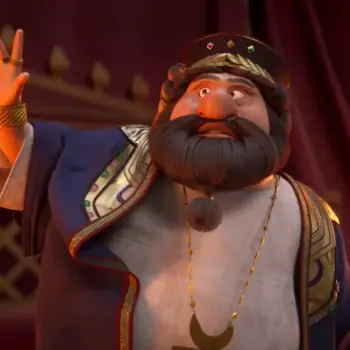It started with a joke, and then it got a little more serious.
Sean Anders, the director of edgy family-themed comedies like That’s My Boy and Daddy’s Home, told his wife he thought they might be getting a bit old to start a family of their own the traditional way — he didn’t want to be one of those older dads that couldn’t throw the ball once the kids were old enough to play — so he joked that if he and his wife adopted a five-year-old, it would be like they had started their family five years earlier.
To his surprise, his wife took the idea seriously, and before long they were looking at becoming foster parents — and that, in turn, led to he and his wife adopting three biological siblings. And that itself has now led to Anders co-writing and directing Instant Family (opening November 16), which applies the humorous sensibility of his earlier films to a heartfelt depiction of the joys and struggles of taking three children into your home when they have already had time to experience life and loss on their own.
Daddy’s Home co-star Mark Wahlberg plays the adoptive dad, Pete, while Neighbors co-star Rose Byrne plays his wife Ellie. The film also marks a reunion of sorts for Wahlberg and his Transformers co-star Isabela Moner, who plays the eldest of Pete and Ellie’s foster children. (Moner is currently filming the big-screen Dora the Explorer adaptation, which is due next year.) Octavia Spencer and Tig Notaro play the social workers who guide Pete and Ellie (and several other couples) through the world of foster care.
I had a chance to speak to Anders by phone while he was promoting the film in Boston. (The Red Sox victory parade was passing by outside his window as we spoke.) What follows is a lightly edited transcript of our conversation.
–
You’ve talked about how you yourself were a foster parent, and then you adopted the children —
SA: Yeah.
— and I’m just curious as to how long ago that was. How much distance and perspective would you say you have on that experience now, that you brought to the film?
SA: Well, it’s going on seven years this March, so I’m a good ways into it but I still have a ways to go, and I probably started writing the script about three years ago, so it’s been sort of a work in progress for a little while. So yeah, I think when I started I was around three or three-and-a-half years into my process.
I gather from the production notes that the age range of the children you adopted is not quite the same as the age range we see in the film.
SA: Yeah, that’s true.
So what age range did you take on when you got into this?
SA: My kids were six, three, and a year and a half when we met them. And I can tell you where the [teenaged] Lizzie character came from, because in my real experience, we went to one of those adoption fairs like Pete and Ellie do in the movie, and just like in the movie, the teenagers were kind of off by themselves, and we had no intention of adopting a teenager — we were very scared of that idea.
We wound up meeting a teenaged girl at the adoption picnic, and she really seemed great, and we met her two younger siblings, and very reluctantly and with much trepidation we put them on our sheet, and we were matched with them, and then we spent the next couple of weeks just kind of getting acclimated to that idea and even getting kind of excited about that idea, and then we got a call from our social worker about three weeks later saying that the teenaged girl had been in care for about four years and was understandably very connected to her birth mom and she was really holding out hope that her birth mom was still coming for her, so she chose not to accept the placement. So then our social worker said, pretty matter-of-factly, “But there are these other three kids,” and those happened to be my kids who are with me in Boston today.
But that was where the Lizzie character was born from, was that young girl that we met at the adoption fair who we almost adopted. And so what we did — and when I say “we,” I mean my writing partner John Morris and I — we got together with a lot of adoptive families who had adopted teenagers and a lot of young women who had been adopted as teenagers, and we’ve learned their stories and incorporated a lot of their stories into the film.
Making a fictitious film but still one that is sort of inspired by your own experiences: How do your own children — or, if you’ve gone to support groups yourself like the one in the movie, people in those support groups — feel about seeing their experiences reflected in this movie?
SA: The experiences in the movie are all either my own or they’re [the experiences of] families that I specifically met with to talk about the script and the movie, so everybody that I talked to whose lives became reflected in the movie, they all knew what we were doing, and everybody was very supportive of what we were trying to do with the movie. So everybody was pretty excited about it.
And as far as my own kids, we’re very open with our kids about, you know, obviously what I do for a living, we talk very openly about our past and our history as a family, so to them it was almost kind of boring, like, who would want to see a movie about our boring family, y’know? So I think, to them, it was kind of a surprise, especially now that they’ve gotten a chance to see the movie — just last night we did a screening here in Boston, and the movie played just huge, and the kids are just so knocked out that people seem to be really excited by this and interested in this and getting a lot of laughs from it.
Can you talk about the challenge — if it was a challenge — of telling a story that is sincere and true to experiences like yours but also pitching it in a sort of comedy register? Because there are moments that feel very similar to things we’ve seen in movies like Daddy’s Home, some of the more over-the-top comedy moments. Was that a challenge, bringing these things together?
SA: Yeah, I think, tonally — there definitely is some physical comedy in the movie, but tonally, it’s pretty different from the Daddy’s Home movies. But you’re right, there’s a lot of comedy in it, and it wasn’t a stretch for me at all because anybody who is in these support groups and are adoptive families, they all laugh so much. So much of the support-group time is just spent laughing, and it’s one of the things that Octavia and Tig say in the movie, as the social workers, that you have to be able to laugh and have a sense of humour or you won’t make it through this. So, yeah, it’s been interesting that the people who really live this, they completely have no problem with it being a comedy at all. People who come in from the outside love the movie and find it very funny but I think before they see it, there is some trepidation of this concern that, “Oh, are they going to make fun of kids in foster care?” And of course, that’s not what we’re doing at all.
No, you’re definitely not doing that. Part of the film’s balancing act — part of the challenge — might also be in the fact that the film alludes to some of the more challenging things, like drug addiction, that especially some of the older kids can be dealing with. The children who are the main characters in your film seem to be in a better place than that. Like, the film isn’t as gritty as it could be if it were a straightahead drama, you know what I mean?
SA: Yeah, absolutely. Most of the movies that have been made on this topic are really gut-wrenching dramas, and there have been great movies made, but they tend to instill these negative feelings that people have towards kids in care. These movies will tell an honest but tough depiction of what’s going on, but they’ll leave people walking away oftentimes, just having these feelings of fear and trepidation and pity towards these kids.
And my experience, and the experiences of the families that I worked with on the movie, was that when we met our kids — of course all of these kids are dealing with some level of loss and trauma, and every adoption begins with some level of tragedy — but the reality is that these kids are just kids, they’re kids like anybody’s kids, and they need families and they need love and they have love to give, and I wanted to tell a more complete story that definitely doesn’t shy away from the trauma or the tragedy but also gets into the love and the laughter and the joy of becoming a family.
The film also alludes to the so-called “white saviour” issues. There was an article recently by David French — he adopted a black child from Ethiopia and he talked about how, lately, he and his wife [former Patheos Entertainment editor Nancy French] have been getting negative feedback from people who think they shouldn’t have done that. Is that something you also had to deal with in your own experience?
SA: I’ve been pretty fortunate in my experience. I’ve heard a lot of stories from different people, and different comments that have been made to them. People have been very kind to me, and we touched on it in the movie just in the sense that there is such a great need out there for these kids — there’s a half a million kids in foster care, and out of those kids about a hundred thousand of them are kids who are not going back, they don’t have anybody to go back to, they need people to step up for them, and the system certainly doesn’t discriminate. The system is open to anybody, and I think anybody who’s willing to step up and be a mom and dad for some kids who need love, that that’s a really important thing, and it doesn’t need to be politicized in that way, I believe.
The website that I write for specializes in discussions around spirituality and so forth, and I was intrigued by the way your film showed the diversity around the different kinds of people who adopt kids. You have what appears to be a born-again couple, and you have a gay couple, and so forth, and they all get along. How did you go about putting that into the mix, in the film?
SA: Well, that really was from my own experience. When I was going through the orientation and the classes and the support groups, it was a little bit of everyone. You go through eight weeks of classes, and the people that currently are really drawn towards foster-care adoption, your sort of main groups are people who can’t conceive and have decided to start their family in a different way, or a lot of people have come to it through their church, and obviously same-sex couples as well.
So you have these people that really come in from all walks of life, but everybody kind of wants the same thing: they come in wanting to provide some love and family and home for kids. So they’re all good people, and they might have their differences or their differences of opinion when they first get there, but after you go through the classes, you really get to know each other, and particularly when you’re in the support group and you’ve heard everybody is going through really similar things with their kids, you really come together and try to help one another. So that’s all very real.
–
Instant Family opens in theatres across North America on November 16.














